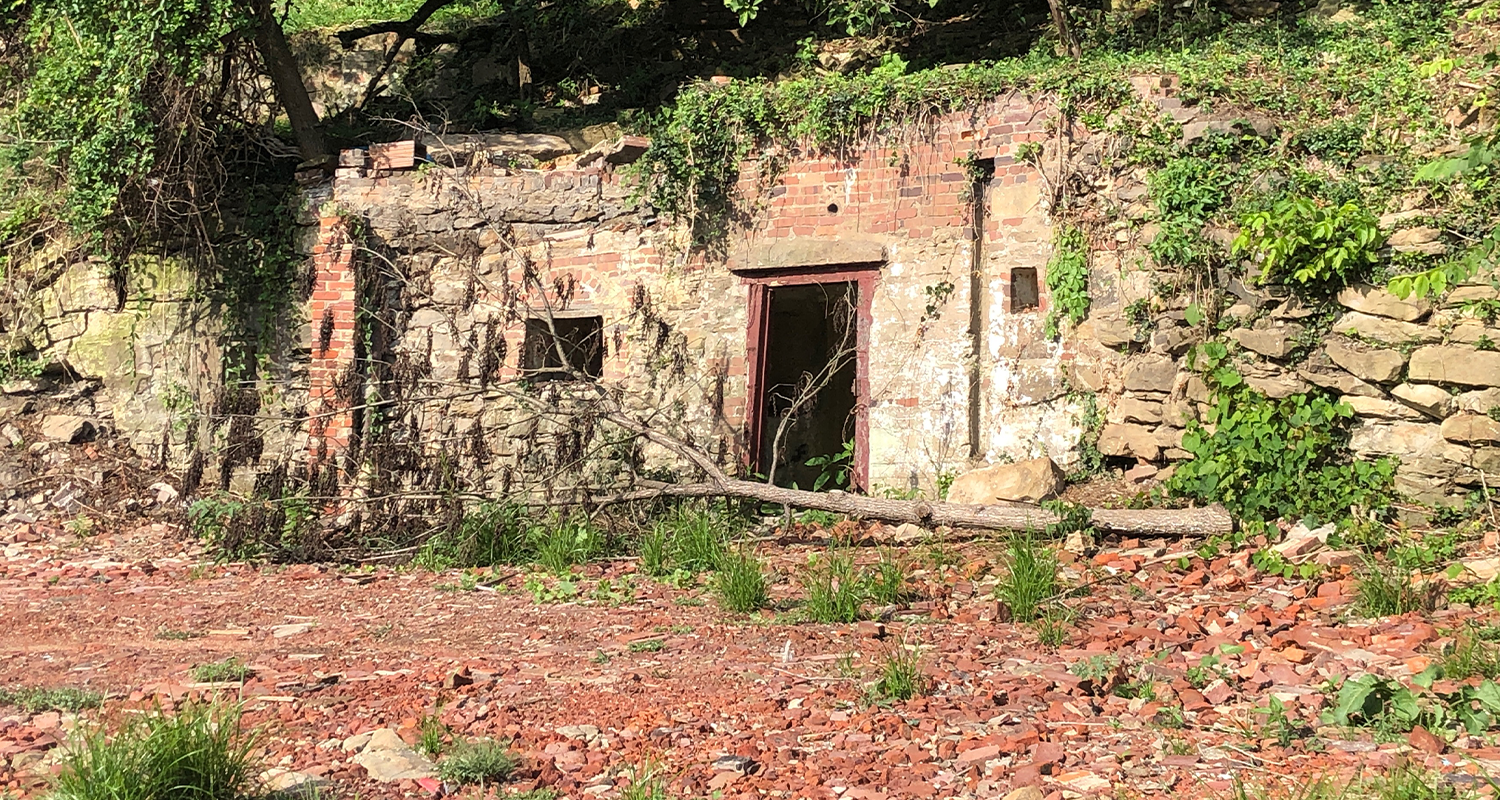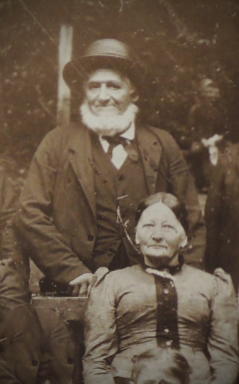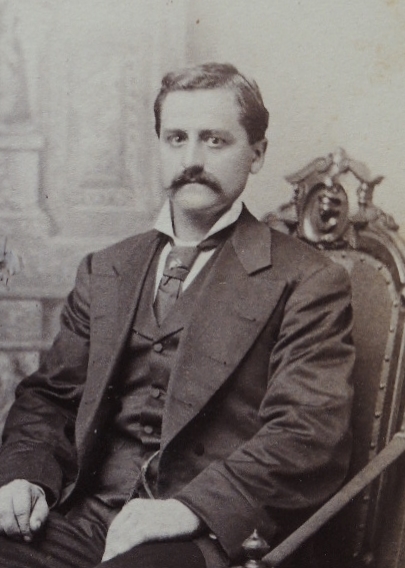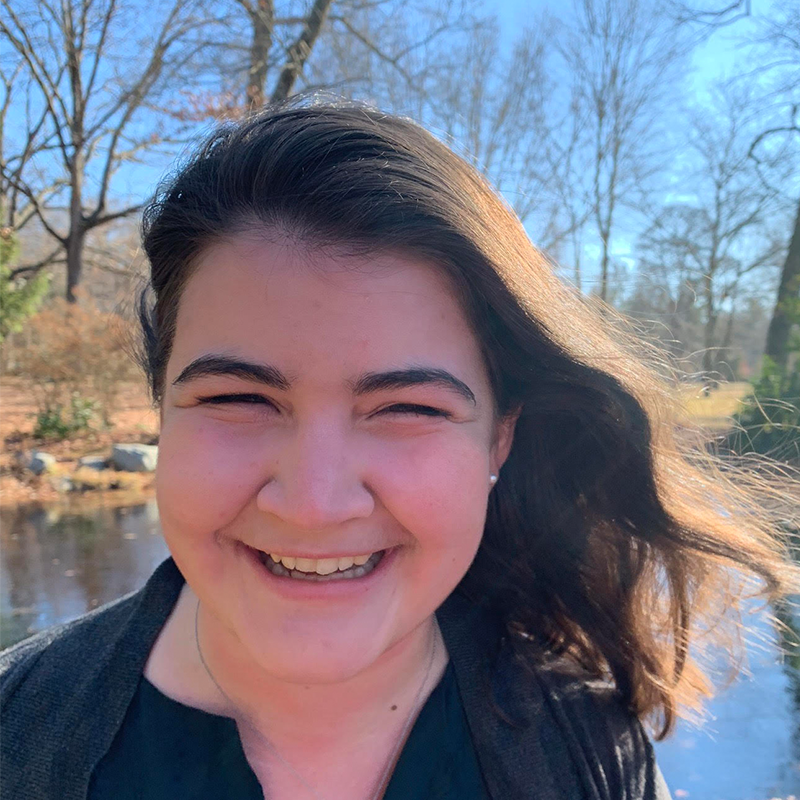Originally published August 30, 2021
If you’ve driven down National Road recently, you may have noticed a bit of history suddenly uncovered. On the northern side of the road, across the street from Generations and Sibs Antique Store, a duplex house was demolished several months ago. While the destruction of such a historic building on National Road is deplorable, if you take a closer look behind the footprint of the duplex, you find the remnants of a historic building built into the side of the hill.
What was it? Who lived or worked there? What was it used for?
Just from brief glances from driving by, some hypothesized that it might be an old blacksmith’s shop. I decided to try to figure it out…
A Family Affair
I started with maps, specifically Sanborn Fire Insurance Maps because they were detailed and drawn periodically—perfect to trance change over time. However, the Fulton area on National Road wasn’t included on many of the earliest Wheeling Sanborn maps because there wasn’t enough development yet to warrant an insurance map.
1890 is the first Sanborn map to include Fulton…and…lo and behold…it was a blacksmith shop!1
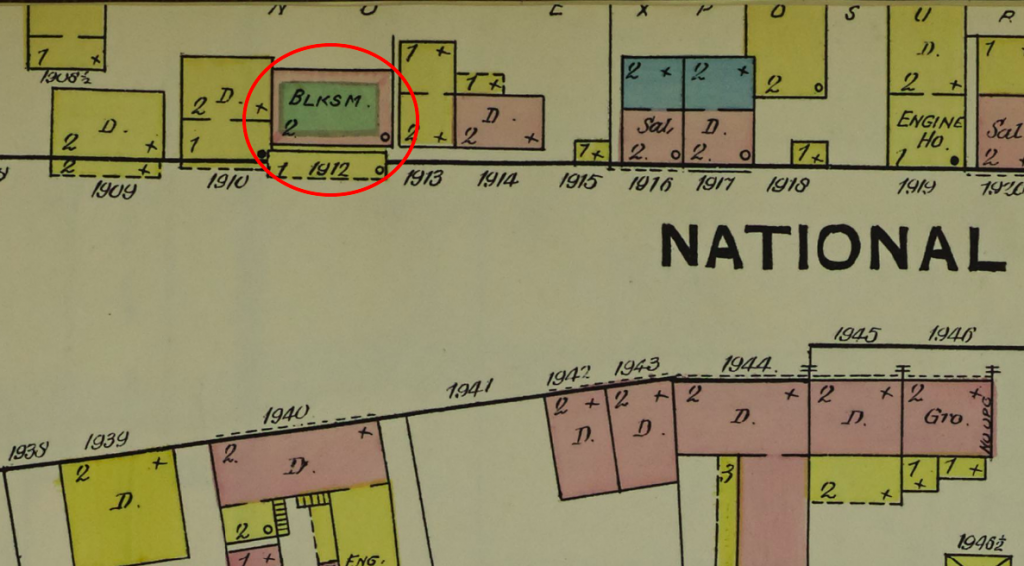
Right where the building in question is currently located, there is a corresponding building on the map labeled “Blksm.”—short for “Blacksmith.” On the 1902 Sanborn map, 12 years later, it is still labeled “Blksm.” but has had additional space built to the rear.2
Various historical maps and Wheeling City Directories finally led me to the Schuetzner family—specifically Matthias and August Schuetzner. Matthias Schuetzner, and his wife Mary, immigrated with their young family to the United States from Prussia (Germany) in 1853. The ship’s passenger list noted that the Schuetzners were headed to Maryland, but they quickly settled in Wheeling, VA instead. Also on the list was Matthias’s profession—blacksmith.3
By the 1856 Wheeling City Directory, a “Mathew Schutzneo” was listed as a blacksmith and wagon maker on National Road in Fulton.4 This would not be the last time that the family’s name was spelled incorrectly. The surname was originally the more German spelling, Schützner, but the spelling changed as they started their new life in America—not uncommon for many immigrants of the 19th century. Over the course of my research, I came across various spellings of Schuetzner and Matthias was often listed as a version of “Mathew” or just simply “M.”

The Schuetzner family moved to the United States and Wheeling during a time of significant German immigration to the region. While they may have missed their home country, they would find no shortage of fellow German immigrants and their culture represented in their new city. In Wheeling, there were German newspapers, singing societies, and dozens of German breweries and saloons. The German language was taught in schools and many fraternal and social organization meetings were conducted in German. In fact, so much of Wheeling’s population was German or of German-descent that by the end of the 1800s it was considered “a largely German town.”5
Blacksmithing in Wheeling
At the time that Matthias and Mary were raising their family and operating a blacksmith shop on National Road, the major thoroughfare was one of the main routes for westward-bound pioneers. However, even though the road was completed to Wheeling in 1818, it “began to deteriorate soon after its completion.”6 All of the land travel was done by horse, stagecoach, or wagon and the muddy road created a significant demand for a blacksmith, wagon maker, and horseshoer. The Schuetzner family was perfectly positioned to provide their services right before travelers would have to ride up the steep hill into downtown Wheeling.
Once he came of age, Matthias and Mary’s son, August—who was one year old when they immigrated to the US—joined his father in the blacksmithing trade. August is first listed as a blacksmith (along with Matthias as “Mathew”) in the 1875 Wheeling City Directory.7
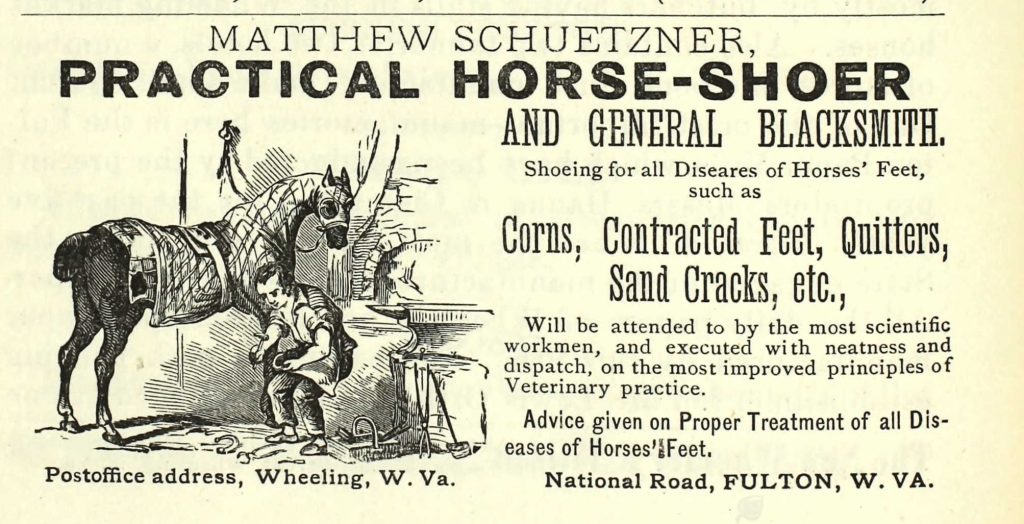
In 1893, August bought Lot 32 on National Road from his parents for $5 (about $152 today) and “natural love and affection.”8 In the next year’s City Directory, Matthias is listed as retired.9 Curiously, on the 1922 map, the building is still there, but the blacksmith label has disappeared.10 When August died in 1928, his occupation was listed as a “farmer” with no mention of his family’s blacksmithing career.11
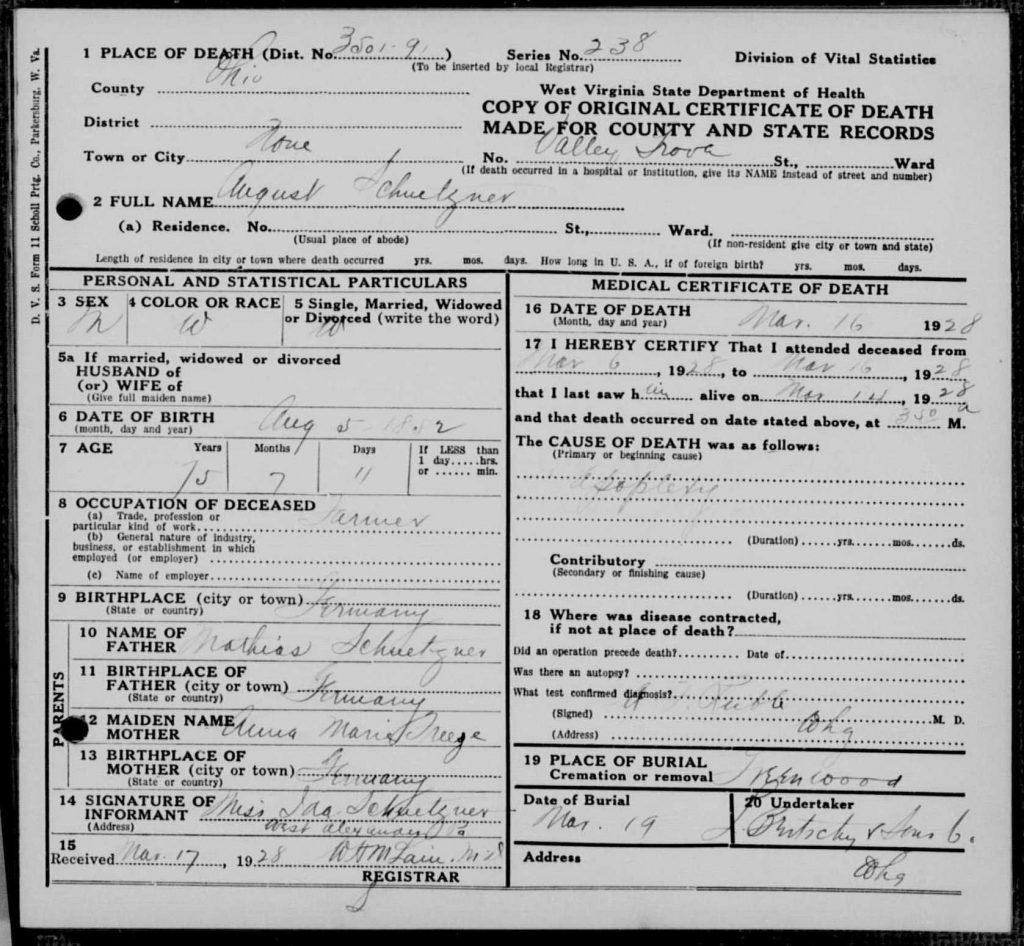
After the Schuetzner family, the property including the blacksmith shop has undoubtedly changed hands numerous times. Regrettably, the only reason the blacksmith shop became visible to the public was because of the demolition of a historic house that had many stories to tell. The Fulton neighborhood and the area along National Road carries its own historical weight, even though it is very different from the elegant downtown Victorian homes people often associate with Wheeling. Even though interstate highways, trains, and airplanes have routed travelers away from the slower National Road, it still plays a crucial role in the daily lives of Wheeling residents traveling locally. However, there is certainly not the same demand for a blacksmith as there used to be…
• Emma Wiley, originally from Falls Church, Virginia, was a former AmeriCorps member with Wheeling Heritage. Emma has a B.A. in history from Vassar College and is passionate about connecting communities, history, and social justice.
References
1 Sanborn Fire Insurance Map from Wheeling, Ohio County, West Virginia. Sanborn Map Company, 1890. Map. https://www.loc.gov/item/sanborn09470_002/.
2 Sanborn Fire Insurance Map from Wheeling, Ohio County, West Virginia. Sanborn Map Company, 1902. Map. https://www.loc.gov/item/sanborn09470_003/.
3 “New York Passenger List, 1820-1891: 18 Nov 1853–12 Dec 1853,” FamilySearch, accessed August 23, 2021, https://www.familysearch.org/ark:/61903/3:1:939V-5KSF-W3?i=310&cc=1849782&personaUrl=%2Fark%3A%2F61903%2F1%3A1%3A275G-5FJ.
4 Williams’ Wheeling Directory, City Guide, and Business Mirror, (Wheeling, VA: J.H. Thompson, 1856).
5 Sean Duffy, The Wheeling Family, Vol. 2: More immigrants, migrants and neighborhoods, (Wheeling, WV: James Thornton, 2012), 45.
6 George Fetherling, Wheeling: A Brief History, (Wheeling, WV: Polyhedron Learning Company, 2008), 38.
7 Sheppard’s Wheeling Directory: for 1875 and 1876, (Cincinnati, OH: Ohio Valley Publishing Company, 1875).
8 Wheeling Intelligencer, December 21, 1893, p. 5.
9 Callin’s Wheeling Directory for 1894-1895, (Wheeling, WV: The West Virginia Printing Company, 1891).
10 Sanborn Fire Insurance Map from Wheeling, Ohio County, West Virginia. Sanborn Map Company, – 1922 Vol. 2, 1922, 1922. Map. https://www.loc.gov/item/sanborn09470_005/.
11 “August Schuetzner Copy of Original Certificate of Death,” West Virginia State Department of Health, Division of Vital Statistics, March 17, 1928, accessed August 23, 2021, http://www.wvculture.org/vrr/va_view2.aspx?FilmNumber=857605&ImageNumber=926.


